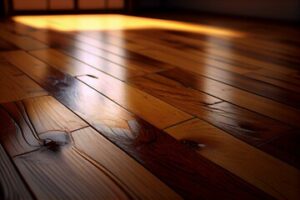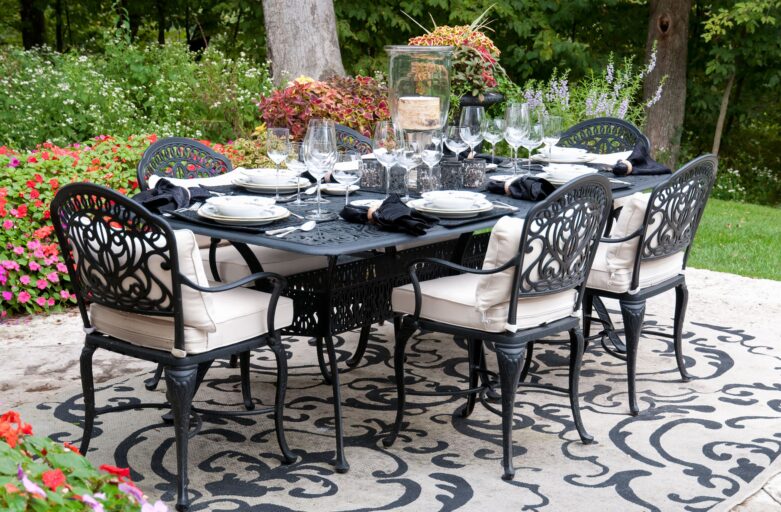General Contractor Richmond VA is a critical member of construction teams. They are responsible for turning the blueprints and renderings of architects into reality on building sites.
To make your resume stand out, you need to showcase your project management skills in the work experience section. Hiring managers look for quantified examples of your success on projects in this section.

The GC is the person on the job who takes the design created by the architect and engineers and turns it into actual building. They schedule subcontractors, order materials and supervise all aspects of the construction process. General contractors have a lot of power to affect project outcomes, and they often gain or lose business as a result of their performance. Because of this, they take a great deal of responsibility for the results of a build. They also have far more financial stake in the outcome than construction management firms do.
GCs must apply for building permits, secure the site and manage personnel. They also have to monitor and maintain accurate records. They are also responsible for the disposal or recycling of waste on the worksite. While a GC can handle many of these duties in-house, some projects require that they bring in their own professional team.
For example, an owner may need a CM to manage the architectural and engineering (A/E) phase of a build. They will hire an A/E firm or consortium to develop a preliminary design. Once they have a finalized design, the A/E will bid the build to general contractors and select a contractor with the lowest bid. The GC then takes over the project.
The A/E will usually not be involved in a GC’s daily operations unless they are required to aid in labor and material procurement. In these situations, the CM acts as an intermediary for the A/E firm and the GC. In other cases, an owner may engage a CM and a GC at the same time. This is called a CM/GC or CMAR job and it allows an owner to be less hands-on while still ensuring that the project is being executed according to specifications.
Contract Negotiation
Contracts are an important part of a general contractor’s job description. They often negotiate contracts with project owners and with subcontractors to ensure that their scope of work, payment terms, insurance requirements and other contract provisions meet the needs of all parties involved in the project.
The contract negotiation process requires knowledge of construction law and a strong understanding of the financial aspects of the business. A GC also works to keep the project within budget and to ensure that all parties are paid on time and in full.
A GC usually has a team of professionals that handles all the accounting, bookkeeping and other financial management of the project. They help manage the flow of personnel and materials in and out of the construction site to ensure that workers are on the job when needed and that all materials arrive when required.
Another part of a GC’s duties is to resolve disputes that arise on the project and maintain discipline among contractors and subcontractors. They may even take on the role of a mediator in more serious cases.
The GC can also be responsible for purchasing and storing all the material supplies for the project. This is especially important for large projects that require the movement of a lot of goods and equipment to be completed on schedule. Purchasing the supplies in advance helps ensure that the project stays on schedule and reduces risk that subcontractors will run out of material during the course of the job.
There are a number of commonly used contract clauses that traditionally stack the deck against a general contractor, such as “pay if paid” versus “pay when paid.” By familiarizing themselves with these provisions and knowing how to negotiate them effectively, a GC can avoid the types of conflicts that lead to litigation.
Scheduling
A general contractor, also known as a prime contractor or main contractor, schedules and directs daily activities on a construction site. They can be an individual for small projects or a company for larger ones. Their services can make all the difference in a construction project, keeping it on track to finish by its deadline and ensuring that building quality is maintained along the way.
The role of a general contractor also includes establishing the timeline for project completion, estimating costs to ensure that all project requirements are met, and developing a plan to avoid costly overruns. Creating a timeline can be difficult since the process of construction is unpredictable, but GCs have experience managing large-scale projects with numerous stakeholders and have the tools to help project teams stay on track.
GCs are responsible for creating and distributing schedules to project managers and team members, ensuring that all parties know what is expected of them. They can create schedules for specific subcontractors or entire groups of staff at once, making it easier to manage everyone’s workload and ensure that tasks are completed on time.
For large construction projects, a GC must handle the supply chain for raw materials and building components. This involves evaluating vendor proposals, negotiating pricing, analyzing capacity, estimating turnaround times, and invoicing. In addition, they must work to ensure that there is a seamless communication channel throughout the project.
If you’re looking to build a new home, remodel your existing house, or complete a commercial project like a shopping mall or public/government building, then it is crucial to partner with an experienced general contractor. They have the expertise, skills and resources to handle all aspects of your construction project, from the blueprints to the finishing touches, bringing it in on budget and on time so that you can move in as quickly as possible.
Subcontractor Management
The quality of the work performed by subcontractors can make or break a project. That’s why the general contractor sets quality standards and benchmarks in the planning and contract negotiation phases. GCs also create a system for systematically evaluating subcontractor performance on an ongoing basis.
During the construction phase, a GC monitors the performance of subcontractors by visiting the job site and discussing progress with subtrade managers. GCs may also conduct regular inspections to verify that subcontractors are complying with schedules and meeting quality standards.
In addition, a GC will review and process invoices or payment requests submitted by subcontractors for the work they’ve completed based on their agreed-upon terms and milestones. Because it’s important to protect the interests of all parties involved, a GC should not withhold payments for poor performance without giving subcontractors proper notification. This could result in a breach of contract.
A good GC will develop strong relationships with subcontractors and consider them partners instead of adversaries. This approach promotes open communication and facilitates a smoother project execution. It’s also beneficial to communicate clearly during the pre-award phase, so subcontractors can plan accordingly and allocate resources according to their capabilities.
It’s important for a GC to maintain a list of qualified subcontractors that can perform various trades within a construction project. This allows the GC to select the best subtrades for each job and ensure that the project meets its deadlines. Moreover, it’s helpful for a GC to build relationships with subcontractors in different regions because of the availability of local labor. However, a GC should only choose subcontractors with a solid track record of delivering the quality of work expected on the project.
Safety
Safety is a top priority for GCs because they oversee construction projects that can be highly hazardous. They are responsible for making sure that all workers on the project follow safety protocols to avoid dangerous accidents and ensure that all work is done properly to comply with quality and safety standards.
GCs often handle complex projects that require several contractors with different skill sets to complete the work on time and within budget. For example, knocking down a wall to make way for a new master suite might involve obtaining a permit and multiple subcontractors to get the job done right. An experienced GC knows how to manage these projects from start to finish while maintaining the proper safety standards.
Many GCs and CMs depend partially or fully on sub-contracted services for electrical, plumbing, mechanical, earth moving equipment, sheetrock installation and more. In these cases, a GC or CM contractually employs the sub-contractor’s employees and is responsible for monitoring performance and adherence to the project’s safety requirements. Injuries to sub-contractor employees do not show up on the GC or CM’s OSHA logs, but a GC can still be held liable for a non-compliant sub-contractor’s violations.
GCs that have advanced contractor safety programs often rely on third-party providers to help with prequalification and monitoring of subcontractors. These partners have the technology and expertise to streamline contractor prequalification and inspections, provide a clear picture of contract workers’ safety training and experience levels and flag any issues that need to be addressed. This helps a GC’s EHS team focus on other initiatives and free up internal resources. This type of partnership also supports collaboration between a GC and its supply chain and allows for the sharing of information that might help both sides improve safety adherence on future jobs.

